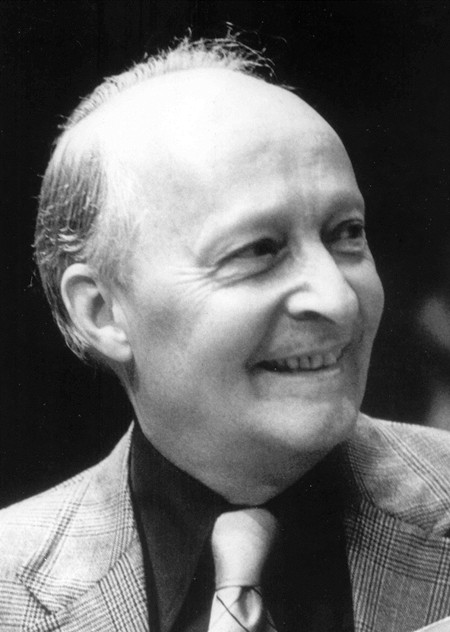
Right then. Sit up and try to look interested, for I am about to ask you a question. What is the first name that springs to mind if I mention Polish classical music? “Chopin!” I hear you squeal and you are correct, despite the fact that he spent most of his life in France. But you might be hard-pressed to come up with any other Polish names. Henryk Wieniawski is one of the best-known, because his Second Violin Concerto still remains popular. Then there was Moszkowski, who was a big name in the late nineteenth century. We mustn’t forget Paderewski either, who was a world-class pianist and had the distinction of briefly being Poland’s Prime Minister. He achieved sufficient musical success to have a star on the Hollywood Walk of Fame in Los Angeles.
In the twentieth century, Poland produced a crop of composers who have achieved international recognition. In 1992, a recording of the Symphony of Sorrowful Songs by Henryk Górecki (goo-RETS-kee) topped the classical charts in Britain and the United States selling more than a million copies. Perhaps the other most influential Polish composers are Szymanowski, Panufnik, Lutoslawski and Krzysztof Penderecki. The music of Penderecki (pronounced, usually with difficulty) as KZHISH-toff pen-der-ETS-kee is more familiar than his name because it’s been used in several movies, notably The Exorcist and The Shining. One of his most influential works is the musically-challenging Threnody for the Victims of Hiroshima, which was used in the 2006 movie Children of Men.
The two works this week really couldn’t be more different. The first one basks in the closing years of the nineteenth century, the second firmly in the twentieth.
An étude is the French name for a study, originally a piano piece intended to develop a particular keyboard technique. All aspiring pianists are obliged to struggle through the studies of Clementi or Czerny but two composers, Chopin in Poland and Liszt in Hungary raised the étude to a high art-form.
Szymanowski (shih-ma-NOFF-skee) composed his four études for piano between 1900 and 1902. The third étude is slow and lyrical and has become the most popular of the set. It was performed by leading pianists of the time and brought the composer considerable fame, especially after it was orchestrated by the Polish composer and conductor Grzegorz Fitelberg. The work has rich, confident harmonies and a lovely nostalgic melody which draws the music to a dramatic climax (at 03:50) before the tension begins to subside as it nears the reflective conclusion. Even though it was composed in the early years of the 20th century there’s a distinct air of fin de siècle about the music. You’ll probably notice some quite dissonant harmonies towards the end; a hint of Szymanowski’s later musical style. Incidentally, he wrote a staggering quantity of music including several concertos and four symphonies. After hearing the third symphony, his younger compatriot, the composer Witold Lutoslawski remarked that he felt “quite dizzy for several weeks”. But in the years to come Lutoslawski would go on to develop a powerful musical style far removed from that of Szymanowski.
Witold Lutoslawski (VEE-tolt loo-to-SWAHF-skee) is one of the great voices of twentieth century Polish music although he was relatively unknown outside the country until the 1960s. This powerful work was first performed in 1954 and was largely responsible for bringing recognition to the composer. It’s brilliantly scored for an enormous orchestra with an extensive percussion section as well as a piano, two harps and a celeste. In case you’ve forgotten, or possibly never knew the celeste is a tinkling instrument that looks like a small piano. The name means “heavenly” in French and the instrument is best known for its prominent role in Tchaikovsky’s Dance of the Sugar Plum Fairy. You won’t hear many fairies, sugar-plum or otherwise in this action-packed Concerto for Orchestra. It opens with fragments of melody scattered over a relentless, threatening percussive pounding in which dissonance abounds, though there are also moments of opulent harmony with tantalizing fragments of folk-song. The second movement begins with a kind of nocturnal scurrying and develops into a heroic passage featuring the brass before the scurrying music returns. The virtuosic final movement is in three parts and opens with the time-honoured passacaglia – a series of variations on a brooding melody first heard on the basses. This leads into a driving and intensely rhythmic toccata which drives onward throughout the thrilling movement with sudden quiet passages of intense haunting beauty. The work culminates in a triumphant hymn-like passage thundered out by the entire orchestra before a frenetic closing section brings the work to a breath-taking conclusion.
 |
 |
 |





